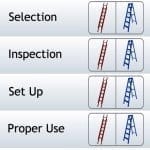Insight
Published and updated
Worker Safety: Resources to Help Avoid the OSHA Top 10
It’s the usual suspects on the preliminary list of Fiscal Year 2017 OSHA Top 10 Most Frequently Cited Standards. Except for one. “Electrical – General Requirements” was knocked out of 2016’s top 10 by newcomer “Fall Protection – Training Requirements.” Despite the reruns, we believe that greater awareness improves worker safety. We’ve gathered some resources to help you identify possible hazards to keep workers safe and prep you for your next OSHA visit.
1. Fall Protection – General Requirements
Falls rank as one of OSHA’s “Big Four” hazards. These account for 90 percent of all construction fatalities. It’s no wonder OSHA keeps a sharp eye on where fall hazards endanger worker safety. This informative infographic from Simplified Safety does a nice job of reviewing solutions to prevent, restrain and arrest falls.
2. Hazard Communication
The OSHA Hazard Communication Standard (HCS) exists to protect the workplace against chemical hazards. To meet the standard, employers must provide “HazCom” training. This training involves a hazardous chemical inventory, safety data sheets (SDSs), labels and a written hazard training program. OSHA provides a model training program for worker safety. Employers can use it to build their own. Purchased training programs are also available.
3. Scaffolding
Many falls result from issues with scaffolding. Unfortunately, a lot of scaffolding citations are issued after catastrophic falls. OSHA provides a scaffolding eTool that includes worker safety checklists and tips on identifying hazards. Masonry Magazine also wrote an informative article comparing frames and elevating systems.
4. Respiratory Protection
About 5 million workers wear respirators at work to compensate for insufficient oxygen or harmful particulates. For employers, the fines for not providing respirators can doom a business. The lion’s share of a recent $261,000 fine in Washington came from respiratory protection infractions. The Centers for Disease Control (CDC) offers a helpful Respirator Fact Sheet.
5. Lockout/Tagout
Control the release of hazardous energy from machinery with lockout/tagout (aka, LOTO) procedures. Document worker safety training by implementing a written Energy Control Program (ECP). It includes energy control procedures, periodic inspections and training. OSHA provides an interactive training tutorial. Safety+Health magazine published an article on lockout/tagout solutions, including padlocks, tags, specialized devices and safety hasps.
6. Ladder
Using a defective ladder or placing an excessive load on a ladder is a violation of the OSHA standard. So is using that top step. The National Institute for Occupational Safety and Health (NIOSH) Ladder Safety Mobile app “delivers ladder safety tools, information, reference materials, and training resources” to any mobile device.
7. Powered Industrial Trucks
This standard is often associated with worker safety around forklifts. Frequent violations include inadequate training, operation by unauthorized workers and lack of seatbelts or lanyards. OSHA requires operators to complete a training program and makes resources available to help you develop your own. Or, you can outsource training to private organizations such as www.forkliftsafety.com.
8. Machine Guarding
Protect operators and others from the machines they work around every day. The OSHA Machine Guarding eTool helps with worker safety from point of operation to LOTO. If you’re not sure about your machine guarding compliance, then you may need a risk assessment. A full assessment of 100 or more machines can cost up to $35,000. But a high-level “safety check” may be a better, more affordable option, according to EHS Today.
9. Fall Protection -Training Requirements
Perhaps because it’s the most frequently cited standard, OSHA may be cracking down to try to reverse that trend. An infraction here doesn’t necessarily mean that employees aren’t being trained on fall protection; they may just be missing the written “certification of training.” Whatever the reason, there’s no excuse for getting cited for an infraction here. OSHA provides a multitude of training resources as part of its Fall Prevention Campaign.
For more info, check out our post on Fall Safety.
10. Electrical, Wiring Methods
Electrocutions also rank in OSHA’s Big Four. This standard (1910.305) applies to wiring methods, components and equipment for general use. Violations might include uninsulated wiring or improper use of extension cords. In 2014, fabricated metal product manufacturing, food manufacturing, and plastics and rubber product manufacturing companies were cited more than any other sectors. OSHA provides an Electrical Standard eTool to help you determine requirements for your building.
Even though Electrical – General Requirements fell out of the top 10, it’s still a fairly common violation. Make sure your electrical panels aren’t blocked. This standard (1910.303) applies to the more generic “examination, installation, and use of equipment,” where “equipment” is electrical conductors and equipment. According to Electrical Construction & Maintenance (EC&M), there were 83 fewer incidents associated with this standard reported in 2015 than in 2014 and a total of 1,973 violations.
Do you have any resources you can recommend to help improve worker safety and meet these OSHA standards? Share them @SoneticsCorp.

